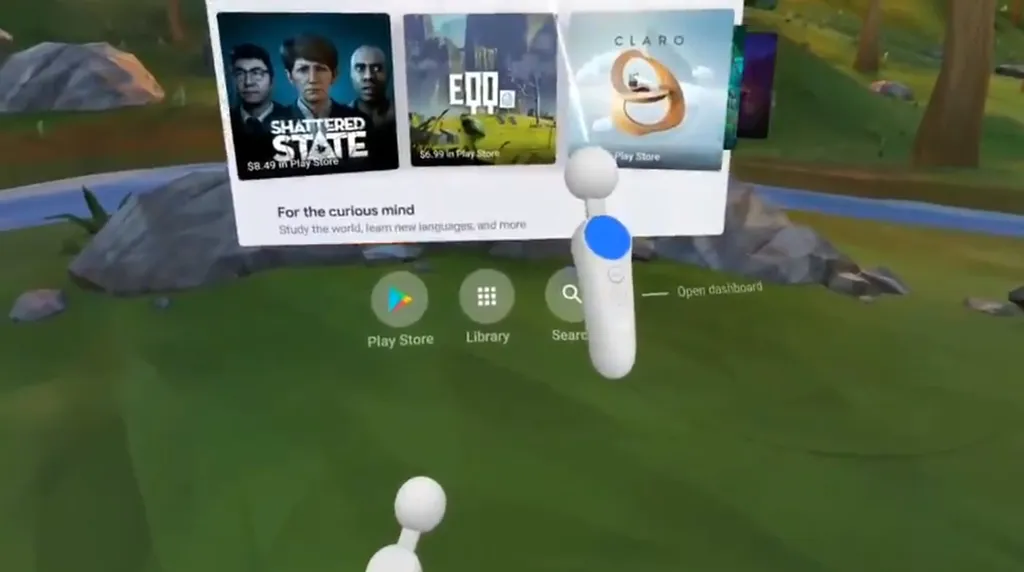A few months back Google announced that it was developing a pair of six degree of freedom (6DOF) controllers to be used with the Lenovo Mirage Solo standalone VR headset. The device, which runs on Google’s Daydream platform, needs to be fitted with a new faceplate that allows for the controllers to be tracked without the need for external sensors. Today, we’ve finally seen those controllers in action for the first time.
Alex Coulombe of Agile Lens was one of the first to receive a development kit for the new controllers, which are being sent out to studios now. He’s been posting the first videos of the controllers in action on an insightful thread on Twitter, coming away with some key findings.
If you don’t have the faceplate plugged in, everything is normal. As soon as you plug it in, the controllers just appear (sometimes at the wrong place for a moment). From there you can go about your business naturally like in any desktop #6DoF experience.#VR #Daydream #DevKit pic.twitter.com/e7T66VaQVd
— Alex Coulombe (@iBrews) December 19, 2018
Overall, Coulombe seems very happy with the controllers, describing them as “really, really good.” The field of view (FOV) for tracking is apparently “surprisingly wide” and the tracking quality is “on par” with Microsoft’s PC-based Windows VR headsets, which also use inside-out tracking. Coulombe used the controllers across a number of apps, discovering that they imitate Daydream’s standard 3DOF remote in pre-existing apps.
There are some caveats; Coulombe says the dev kit is battery-intensive and that the controllers cause tracking upsets when obstructing each other.
When does the tracking fail, you may ask? Primarily anytime the controllers obstruct each other. Not a big problem– few applications I can imagine where you’d really need to cross your hands over each other. Just be mindful.@GoogleARVR #Daydream #6DoF #DevKit pic.twitter.com/xSLXFOfoHh
— Alex Coulombe (@iBrews) December 20, 2018
Other than those issues, though, it looks like a promising start for Google’s 6DOF controllers. The company hasn’t yet announced any plans to make them available to consumers, though we’re hoping for that news in the near future. With Oculus Quest fast approaching, we’re looking forward to seeing increased competition in the standalone VR scene.


























